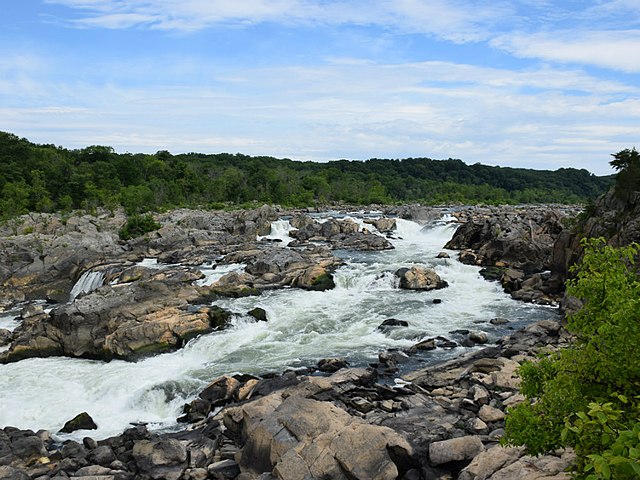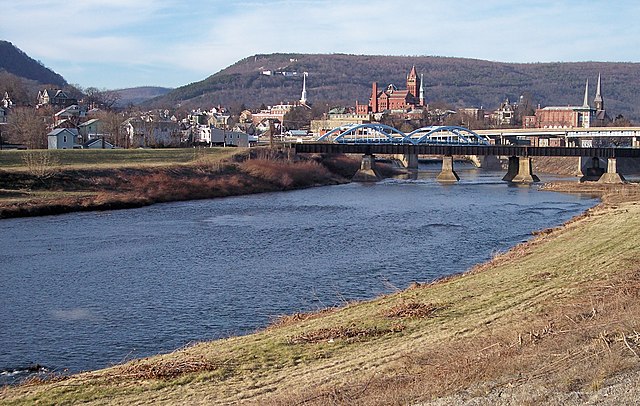Chesapeake and Ohio Canal
The Chesapeake and Ohio Canal, abbreviated as the C&O Canal and occasionally called the Grand Old Ditch, operated from 1831 until 1924 along the Potomac River between Washington, D.C. and Cumberland, Maryland. It replaced the Potomac Canal, which shut down completely in 1828, and could operate during months in which the water level was too low for the former canal. The canal's principal cargo was coal from the Allegheny Mountains.
The Chesapeake and Ohio Canal in Great Falls
A boat on the canal, circa 1900-1924
Canal boats waiting to be unloaded in Georgetown.
Low-angle bird's-eye view of central Washington toward the west and northwest with The Capitol in foreground. The Canal is visible running along the mall.
The Potomac River is a major river in the Mid-Atlantic region of the United States that flows from the Potomac Highlands in West Virginia to the Chesapeake Bay in Maryland. It is 405 miles (652 km) long, with a drainage area of 14,700 square miles (38,000 km2), and is the fourth-largest river along the East Coast of the United States and the 21st-largest in the United States. More than 5 million people live within its watershed.
Potomac River
The Potomac River in Washington, D.C., with Arlington Memorial Bridge in the foreground and Rosslyn, Arlington, Virginia in the background
The North Branch between Cumberland, Maryland, and Ridgeley, West Virginia, in 2007
Canoers at Hanging Rocks on the South Branch in the 1890s








